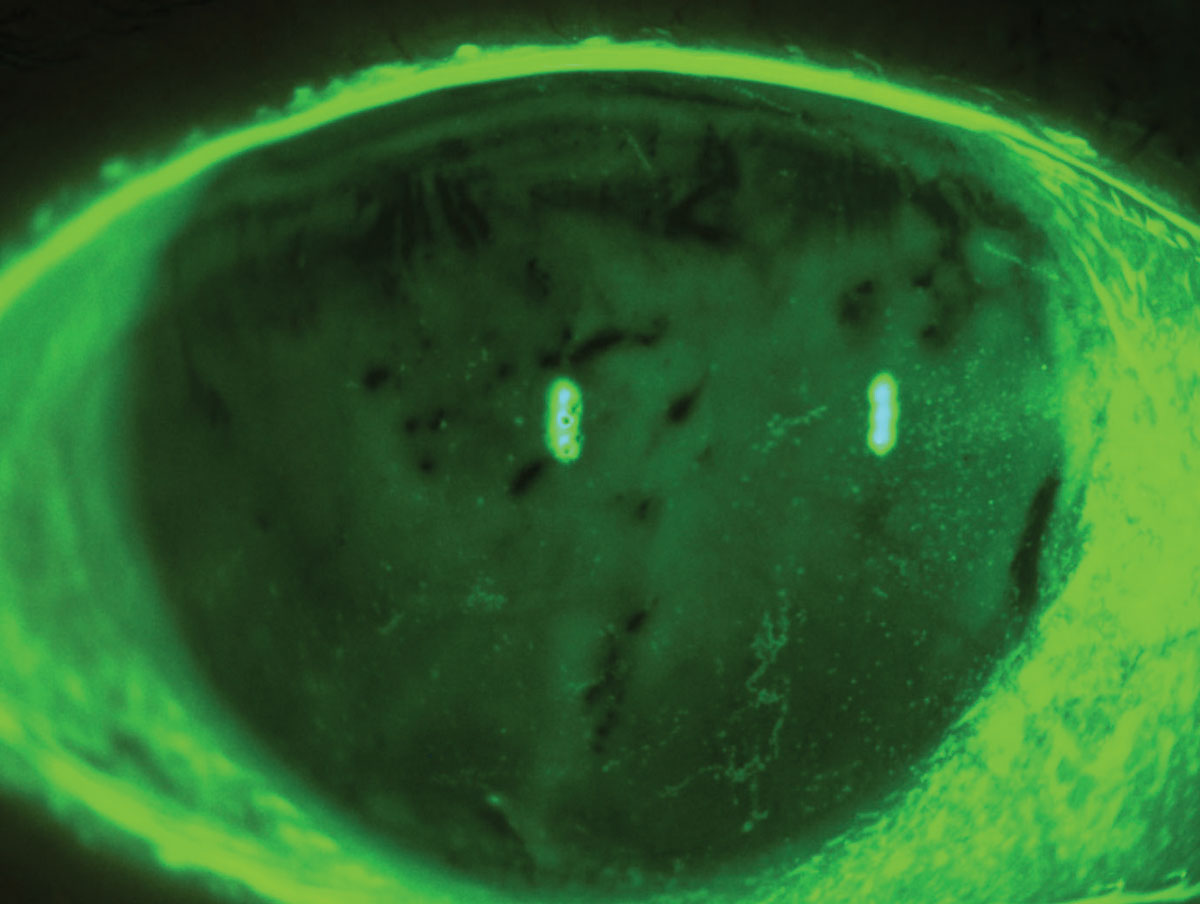 |
|
Follow-up research from the DREAM study documents higher prevalence of dry eye among women vs. men but failed to find a basis in estrogen activity. Photo: Luis Rojas, OD. Click image to enlarge. |
To better understand how dry eye disease (DED) signs and symptoms differ across decades of life with goals of assessing detection and treatment, researchers recently evaluated how increasing age is associated with signs and symptoms in the Dry Eye Assessment and Management (DREAM) study, the somewhat controversial research to evaluate the effect of omega-3 fatty acid supplementation on DED treatment. They found that corneal staining, tear breakup time (TBUT), tear osmolarity and a composite severity score of DED signs were significantly more severe with increasing age in women but not men; symptoms did not worsen with increasing age.
The study participants were broken into four age groups: those aged 50 and younger (n=120), 50-59 (n=140), 60-69 (n=185) and older than 70 (n=90). At baseline, six and 12 months of follow-up, participants underwent assessment of DED signs and symptoms using the ocular surface disease index, brief pain inventory, TBUT, Schirmer’s test with anesthesia, conjunctival staining, corneal staining, meibomian gland dysfunction evaluation and tear osmolarity.
The team proposed several possible explanations as to why dry eye signs worsen with age. “For example, it is possible that changes in epithelial damage and DNA alterations are exacerbated by inflammatory processes in the conjunctival epithelium, corneal epithelium and accessory lacrimal glands, which are more likely to occur with the progression of time in one’s lifetime,” the study authors explained in their paper. “Further, it is possible that the healing process from oxidative damage is either partially or completely hindered by oxidative strain, leading to increased damage from these reactions. Lifetime exposure to factors such as pollutants, ultraviolet radiation, ozone and eye drops is noted to increase oxidative stress and inflame the ocular surface which may contribute to DED progression.”
As to why dry eye signs worsen in women: a previous study that evaluated the correlation between estrogen receptor-positive basal cells of the meibomian glands and age found an increasing proportion of cells expressing estrogen receptors with increasing age, independent of gender. “However, this study did not find any differences between men and women in correlation of estrogen receptor positivity with dry eye symptoms, TBUT or Schirmer I and II results,” the authors noted. “Thus, there are likely factors other than estrogen receptor expressivity involved with the relationship of DED signs in relation to both sex and increasing age.”
The authors added that decreased corneal sensitivity could contribute to the lack of association between DED symptoms and age.
“Overall, we found that older age is associated with more severe dry eye signs but not associated with dry eye symptoms,” the authors concluded. “However, there are still many unanswered questions regarding the complex pathophysiology underlying these findings. Future studies that study the role of oxidative stress with increasing age and other potential factors affecting DED as patients get older would be helpful.”
Zhao M, Yu Y, Ying GS, et al. Age associations with dry eye clinical signs and symptoms in the Dry Eye Assessment and Management (DREAM) Study. January 5, 2023. [Epub ahead of print]. |


